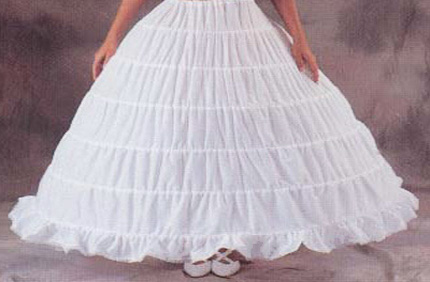A yard of fabric has a specific meaning. In Europe in the middle ages, the width of cloth was made standard, and there were penalties for selling "short measure," i.e., cloth which was not as wide as statute required. Cloth was measure by ells, and an ell could be anywhere from 27" to 60." In England, an ell was 45" (cloth imported or cloth to be exported was measured in Flemish ells, but i won't confuse this any further).
So, by custom, cloth in English speaking countries is usually 45" wide (some heavier cloth is sold in bolts--a bolt is a roll of cloth--which are 60" wide, but 45" is the most common standard). That means that a linear yard of fabric is not a square yard--it is not 36" by 36" but it is in fact 36" by 45" or one and one quarter square yards. This measurement is invariably used when referring to fabric sold off bolts. So Miss Butler's twelve yards of fabric is actually fifteen square yards (twelve yards long, 45" or one and one quarter yards wide). I haven't read the novel, but i see nothing in this context to suggest that it is simple 12 yards of muslin wrapped around her skirt hoop. Very likely, the twelve yards of fabric were cut into sections, which were then sewn to produce petticoats, with the result that she wore one petticoat over another to produce the desired effect.
This is an image of a woman wearing a skirt hoop:

This is an image of a petticoat of the type used for hoop skirts:

This is the effect acheived by putting petticoats in several layers over a skirt hoop:

The name for the frame was a skirt hoop. The entire outfit was known as a hoop skirt. With Miss Butler's 15 square yards of fabric, i suspect that she could have had about five petticoats made up, certainly no more than six.